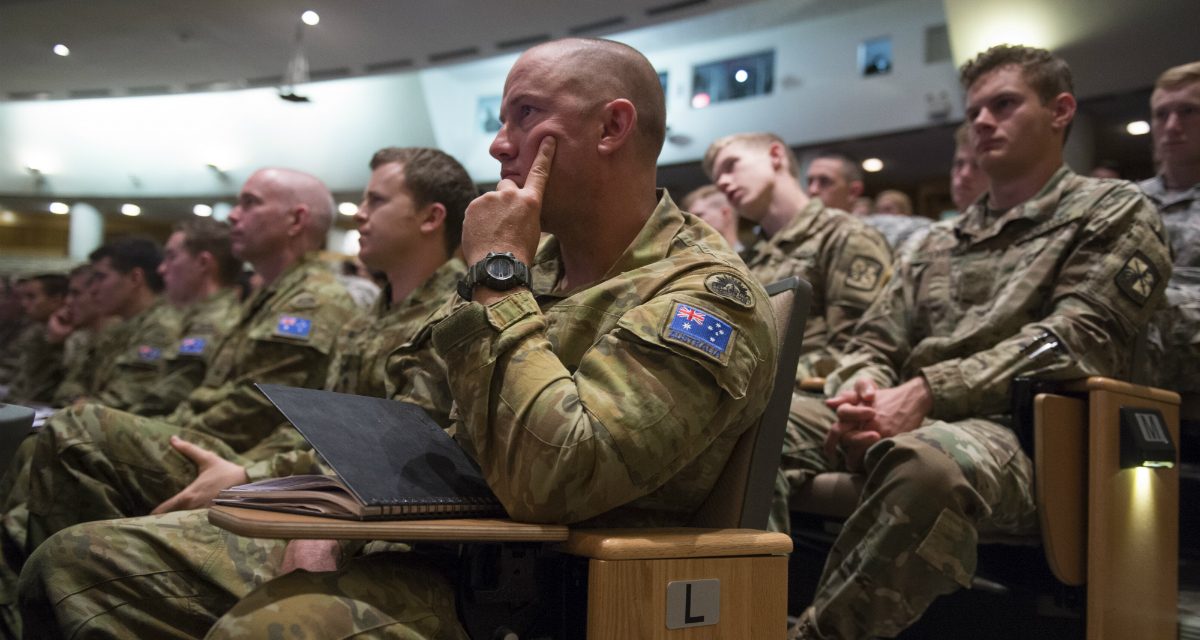The second annual Sandhurst Conference took place on Monday, April 3, 2017 in Thayer Hall. Made possible through the generosity of the USMA Class of 1999, the all-day event brought together over five hundred future officers from USMA, ROTC, service academy, and international teams to discuss topics related to training to meet twenty-first-century threats and challenges. Sponsored by the Modern War Institute, the conference has become a staple of Sandhurst Week. The purpose of the Sandhurst Conference is to provide an intellectual counterpart to the Sandhurst Competition, a way to test our mental agility as well our military skills. The conference also reinforces West Point Superintendent Lt. Gen. Robert Caslen’s aim to transform USMA’s Department of Military Instruction into the world’s preeminent military program. It does do by challenging our future military leaders beyond tactical and technical expertise; as well as by leveraging the uniquely diverse and international audience of Sandhurst teams to enhance cadets’ critical thinking and complex problem solving skills.
The theme of this year’s conference, “Training to Win Tomorrow’s Wars,” recognizes that technical and tactical competence alone no longer suffices for junior officers to meet the challenges of twenty-first-century warfare. With the character of warfare changing amid technology rapidly advancing, our military training must reflect the growing complexity and uncertainty of the modern battlefield. From realism in our computer simulations to managing the effects of resource constraints, training our junior officers is critical to future military success in an increasingly complex world. No longer is it enough to simply train cadets how to carry out raids or ambushes. From Somalia to South Korea, the threat environment requires that our officers be versed in information operations, hybrid warfare, and technological advances like robotics and autonomous systems (RAS) that are making the battlefield more complex and unpredictable.
The conference featured a series of panels, breakout discussions, speakers, and even a cadet-led Oxford-style debate, all focused on the issue of training to meet tomorrow’s threats. Cadets, officers, and faculty discussed and exchanged ideas on tactics and training, from the role of non-lethal training techniques to improving technologies and simulations to replicate the modern battlefield.

